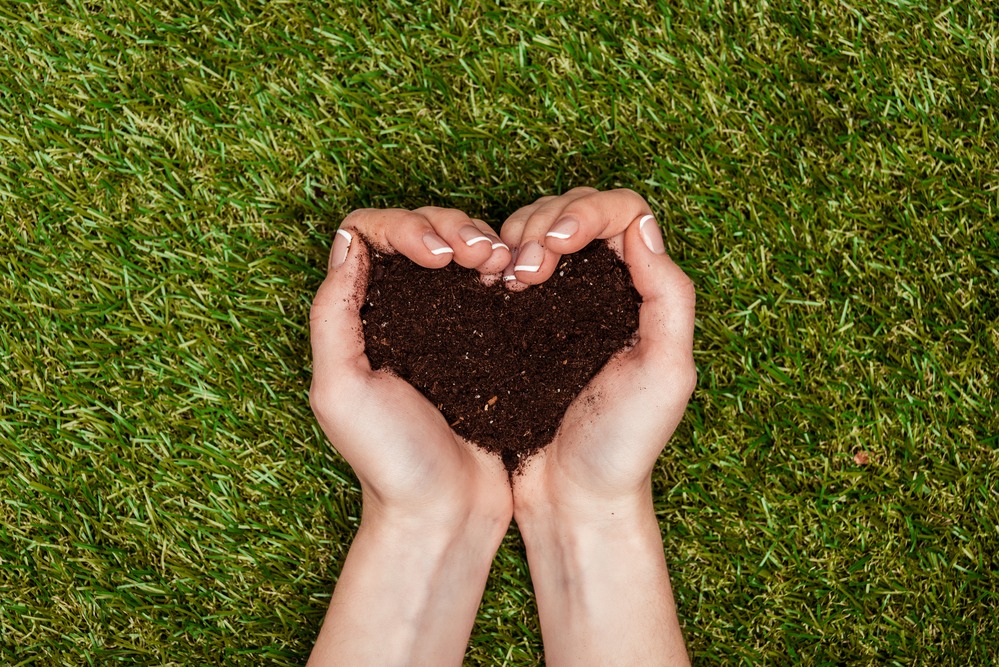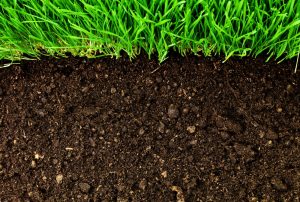
Soil plays a critical role in the growth and health of all plants – especially lawn turf. It acts as a water filter, nutrient source, and habitat for trillions of organisms. When you think you have a turf problem, maybe it’s your soil that is not good!
The more you know about soil, the better. Knowledge is power, and good soil is vital to keeping your lawn lush and green. All those lawns you see and want to enjoy for yourself are grown on healthy soil. So before you transform that lawn, it would be best to know why good soil matters and ensure yours is ready.
What Makes Good Soil?
Soil is the living part of your lawn. It’s made up of organic matter, composed of air, water, and parent material, with millions of microscopic organisms that benefit the soil and benefit from it simultaneously to help sustain life.
The organic matter is made of decaying plant or animal tissue. In other words, every living organism will feed the soil after it dies. The parent material comprises clay, which holds water and nutrients; silt, which contains some nutrients; and sand, which doesn’t have either. Therefore, soil composition matters in how it holds water and nutrients.
Why Does Good Soil Matter?
There are several reasons why good soil matters. The most important of them is that it’s one of the pillars of plant life, alongside water and air.
It enables plants to grow
Farming and food production depends on good soil. All the plants we rely on for food, the forests, and wildflowers, get their nutrients from the soil. The flawless lawns looking like a gigantic king-size bed, thrive because of the soil under them. The same goes for your lawn!
Soil is home to living organisms
There are trillions of living organisms living in the soil. Some are good for your plants, and others are not. A handful of soil can have more living organisms than the entire human population. These living organisms play a crucial role in distributing nutrients for your lawn.
It provides a foundation for plants
The foundation of a building is critical, so it is for plants. Healthy soil is the foundation for plants. It supports plant roots and keeps them upright for growth.
It acts as water storage
Good soil stores water. According to USDA, a 1% increase in organic matter increases the water amount in the soil by 25,000 gallons per acre.
It provides food security
You wouldn’t have time to think about your lawn on an empty belly. Would you? Good soils are fertile, but farming has had the biggest impact on soil health. Intensive farming destroys the species living in the soil.

A healthy lawn starts with good soil. Is your soil up to the job?
Maintaining Healthy Soil
It’s crucial to maintain healthy soil if you want a healthy lawn. Caring for your soil correctly will ensure living organisms and your lawn thrive. The best approach to having good soil is avoiding chemicals that cause imbalance.
Some chemicals may kill off the unwanted pests but might end up penetrating into the soil and destroying the living organisms. We highly recommend using compost like dead plants, leaves, and vegetable waste to improve your soil health.
Mulch, such as wood chippings or straw, and other organic materials help suppress weed, retain moisture in the soil, and keep it cool. The organic mulch decomposes with time and improves the fertility of the soil.
Regardless of your soil type, it would benefit incredibly from the regular application of organic matter to sustain the growth of your lawn. Organic matter absorbs and stores water in the soil for longer. That means you won’t need to water your lawns more frequently.
How to Tell if Soil is Good
Good soil is healthy. Insects and microorganisms thrive in it. The soil also has organic matter and looks darker. The organic matter includes decaying animal tissue and decaying plant. One last sign that the soil is healthy is porosity, allowing water and air through it.
The three signs the soil is not good are that there’s no sign of life in it, the soil is dry with little air and water flow, and no organic matter. You mostly find non-organic debris like building materials and metal in such soil.
The physical properties of your lawn are fundamental. If your lawn looks healthy, then the soil is good. Lawns won’t thrive in unhealthy soil. The color of the soil is also an essential factor. For example, if it’s orange-reddish, that means their soil is rich in iron. Dark brown or black soil is rich in organic matter.
Conclusion
When you’re assured that your soil is good, you’ll have one less thing to worry about the growth of your lawn. Turfgrass is the best grass for your lawn and is easier to manage and maintain. We at The TurfGrass Group are the premier source of pedigree turfgrass varieties. If you want to know which is best for your type of soil, contact one of our local turf growers today.